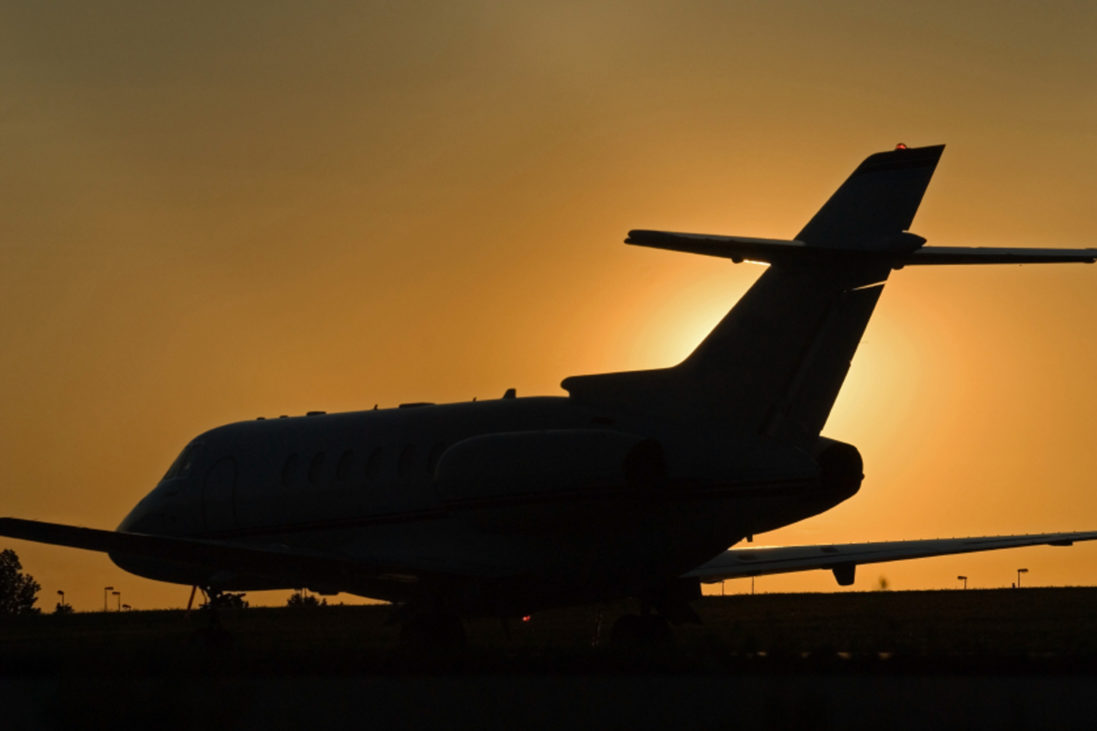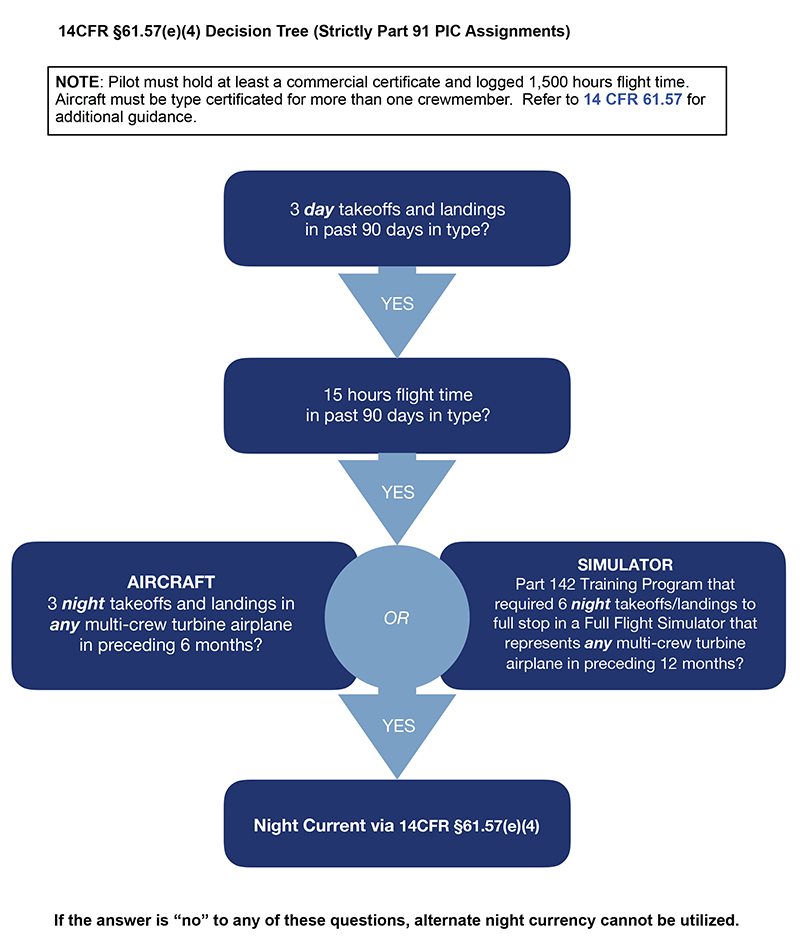
Alternative Means of Compliance for Night Takeoff and Landing Currency
The FAA has published a final rule on night flying currency entitled Alternative Means of Compliance for the Pilot-In-Command Night Takeoff and Landing Recent Flight Experience Requirements.
These rules are summarized in this graphic, with further clarification from subject matter experts found in the text below.
Download this graphic as a PDF
The final rule was a result of receiving numerous comments from corporate operators and airplane manufacturers on the requirements for PIC night takeoff and landing recent flight experience.
Review the Final Rule: Docket No. FAA–1999–5584
It was argued that the requirement to perform required takeoffs and landings in an aircraft of the same type (if a type rating is required) for all types of aircraft in the same category and class is not cost effective and provides an unnecessary burden on their pilots. The commenters requested that an alternative means of compliance for this requirement be granted for their pilots, taking into consideration the aircraft their pilots operate, their pilots’ high level of aeronautical experience, and the additional training required of their pilots.
The FAA agreed and published the final rule that revised 14 CFR 61.57 by adding a new paragraph (e)(3), which establishes an alternative means of compliance to the PIC night takeoff and landing recent flight experience requirements. This rule neither eliminates nor adds requirements to the PIC night takeoff and landing currency requirement of 61.57(b), but merely provides another alternative means for remaining current in night takeoffs and landings.
On Sept. 17, 2003, 61.57(e) was modified by the final rule entitled “Regulation of Fractional Aircraft Ownership Programs and On-Demand Operations.” The final rule clarified the existing alternative means of compliance by clearly defining eligibility requirements, increasing the period of time to maintain landing currency, and extending the alternate means of compliance to Part 135 operators.
Review the Final Rule: Docket No. FAA–2001–10047
The alternative means of compliance allows a pilot in command of a turbine-powered airplane (specifically a turbine-powered airplane that is type certificated for more than one pilot crewmember) to meet the PIC night currency requirements for all the applicable airplane types on the PIC’s certificate as long as the following provisions are met:
- The pilot in command must hold at least a commercial pilot certificate with the appropriate category, class, and type rating for each airplane that is type certificated for more than one pilot crewmember that the pilot seeks to operate under this alternative;
- That pilot must have logged at least 1,500 hours of aeronautical experience as a pilot;
- In each airplane that is type certificated for more than one pilot crewmember that the pilot seeks to operate under this alternative, that pilot must have accomplished and logged the daytime takeoff and landing recent flight experience of 61.57(a), as the sole manipulator of the flight controls;
- Within the preceding 90 days prior to the operation of that airplane that is type certificated for more than one pilot crewmember, the pilot must have accomplished and logged at least 15 hours of flight time in the type of airplane that the pilot seeks to operate under this alternative; and
- The pilot has:
- Accomplished and logged at least 3 takeoffs and 3 landings to a full stop, as the sole manipulator of the flight controls, in a turbine-powered airplane that requires more than one pilot crewmember. The pilot must have performed the takeoffs and landings during the period beginning 1 hour after sunset and ending 1 hour before sunrise within the preceding 6 months prior to the month of the flight; or
- Within the preceding 12 months prior to the month of the flight, the pilot must have completed a training program that is approved under 14 CFR Part 142. The approved training program must have required and the pilot must have performed, at least 6 takeoffs and 6 landings to a full stop as the sole manipulator of the controls in a flight simulator that is representative of a turbine-powered airplane that requires more than one pilot crewmember. The flight simulator’s visual system must have been adjusted to represent the period beginning 1 hour after sunset and ending 1 hour before sunrise.



 International Business Aviation Council Ltd.
International Business Aviation Council Ltd.